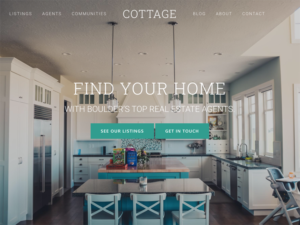When it comes to landing pages, numbers mean a lot.
You need as many leads as possible visiting the page. But what do you do when you get those numbers? Besides building the traffic to your landing page, you should also be aware of what to do to make sure that it really converts.
The landing page should be compelling enough to make your visitors perform a desired action. In most cases, you’ll want the visitors to click on a button or link in the page that takes them to another page and a step closer to buying from you.
Unfortunately, not very many landing pages achieve this. Why? They’re probably lacking the following 4 tips that help boost the number of clicks which most of the high converting landing page templates have in common.
But first: The CTA
Before we dive in, let’s review a few basics of the CTA. The CTA contains the said button, so you want to be thorough if you’re going to get people to click on it:
- The CTA should be focused on the specific goal that you created the landing page for. Want people to download a free e-book? The CTA should mention that, unequivocally, with language such as “download the free e-book” or “enter your email to get the e-book for free.”
- The CTA also needs to be the only CTA on your landing page. If you want people to view your latest YouTube video, don’t try to get them to also download your e-book. This is a costly mistake that could decrease your conversions by 266%.
- But this is just part of the equation. The design and copy of the landing page should be complementary to the CTA.
So, what goes into a highly-converting landing page? Let’s look at 4 important tips.
1. Remove the header and footer from the page
Did you know that while 68% of B2B businesses are using landing pages for lead generation, 44% of B2B company clicks are directed to a home page instead of a landing page?
Granted, it works for some savvy brands. However, this might not always work and one of the main reasons is that, by nature, a home page contains navigation links that go against the stand-alone nature of the landing page.
The home page is also supposed to represent the full scope of the brand, so it makes sense if it has multiple offers and links. The same cannot be said for a landing page.
On a page header, the navigation menu looks something like this:
And here, the same page showing the footer and the accompanying links:
Each one of these links is supposed to take the visitor to a different page. This means multiple windows through which the visitor can excuse themselves out of any goal.
It’s no longer a dedicated page, as it’s supposed to be, if it has links directing the visitor any other place than the next step they are supposed to take. In essence, every other link on the page acts as a CTA and as seen, having multiple CTAs is not the way to go.
To better understand the repercussions of using navigation links in the landing page, you just need to consider the basics of the page. For instance, it’s supposed to be one page. Yes, it could be in long form, but it has to remain in one page. Inputting navigation links connects this single page to other pages, effectively making it not a standalone page anymore.
Also, chances are that you’ll be using PPC ads. The CPC ranges from a few cents to over $250. No matter how much you’re paying for each click, you don’t want to be wasting your money. Having visitors complete goals you’re not focused on costs you.
Given the effects of using navigation links on landing pages, it’s surprising to note that only 16% of landing pages don’t have navigation bars.
HubSpot did a test on one of their landing pages in which one variation had navigation links while the other was free of all the exit links.
The test revealed that the variation without external links had higher conversion rates.
2. Create a sense of urgency and scarcity
We live by the culture of “NOW!”.
We’re just not willing to wait for anything. When you’re a seller, you have to remember this important tactic––instill the sense of “Now” in your marketing program. Don’t be sleazy about it, but simply highlight the facts.
However, in as much as buyers want your product immediately, they are also very cautious about what they spend their money on. They are not exactly itching to spend on your product. That is why the “now” needs something else: “Not for long”. This is the sense of scarcity.
You’ve heard it before: Buy now and save 25%. Only 2 days left. It’s a tested and proven marketing technique.
And you can employ these two complementary tactics to get more people clicking on your CTA.
Unbounce defines Urgency as “the use of trigger words or scarcity tactics to increase your prospects’ sense of having to act immediately”. Scarcity is defined as “a psychological tactic that taps into people’s fear of missing out to drive action”.
So, how can you use this tactic to improve conversions?
It’s all about creating value then setting limits. People like valuable things; but they detest when they are limited. Assuming you already know how your product is valuable to your audience, spot the Unique Selling Point (USP) and communicate it clearly so the audience can see the value.
Then set a limit.
Setting limits arouses the Fear Of Missing Out (FOMO) in the prospective buyers. They don’t want to be looking back and thinking, “What if…” This would cause sadness, maybe anger. And that’s why this method is so effective: It taps into the emotions.
Now, I don’t know if you feel a little evil already but here are some of the ways you can implement this strategy on your landing pages:
Set deadlines. Deadlines imply “the end”––the sense that once it’s gone, it’s gone forever.
This arouses interest, in the target audience.
Even better, extend the deadline but this time, it’s “back by popular demand”. I’m talking about…
While this design isn’t a great example, this gets those who didn’t get a chance to buy the first round.
Make use of the holiday season. The holiday season is a time to celebrate. People buy “just because they should”. Why not make use of that and throw in some “holiday offers”?
Stock count. This is where you tell the customers how much more you have in stock i.e. communicating scarcity.
Reference high sales. Here, you tell potential customers that “everybody has had one” and you’re asking what they are waiting for.
The use of urgency and scarcity is a widely used technique in the marketing world. Imagine increasing your sales by 332% by doing what I’ve just told you.
3. Be mindful of the copy
It takes a ton of time to create a website, but many people don’t provide this same level of attention to their landing page copy. Every word you write on the landing page should be focused on achieving your goal. Every word should nudge the audience towards completing the goal. As such, you should edit it until you’re certain it meets the standards.
Start with the headline. A quote that helps explain this point best:
“On the average, five times as many people read the headline as read the body copy. When you have written your headline, you have spent eighty cents out of your dollar.”
Next is the body copy.
This is the content that will take the reader through discovering what your product can really do and motivate them to want whatever you’re selling. There are a few tested methods that work when it comes to writing effective body copy.
One such method is a 3-step process where you cite the problem, explain how others have failed in trying to solve the problem and then showing how your product helps solve that problem. The formula is also commonly referred to as the Problem, Agitation & Solution (PAS) technique.
Another method is what Copy Hackers calls the “Work Backward” technique, where you begin with the CTA.
When writing the CTA, there are several tactics to employ. For instance, use simple but clear language; offer a guarantee by using words like “risk free” or “money-back guarantee”. You can also use the voice of the customer technique where you use phrases such as “send me my e-book”. This makes the offer almost irresistible.
Check out this detailed guide that covers how to start a blog, where I lay out how to start a successful blog, through conversion driven copy.
4. Test, test, test!
As simple as it is, A/B Testing is the most common method of improving conversion.
You’re never done creating your landing page. In marketing in general, you’re never really done doing anything.
So, this is less of a last and more of a “recurring” point. There’s no tried and tested method for getting the most ROI on your business. Thus, I would be wrong to tell you that this is exactly what you need to do to get your numbers up. At best, I can only provide checklists, such as this 4-point checklist.
To know what really works, keep testing and tweaking.
Getting people to the landing page is important. But it’s not enough. The goal is always to design your site to boost the conversion rate. To do this, you want to make sure that you’re not confusing your visitors by having more than one CTA.
Your CTA should voice the urgency and scarcity in your offer and you should complement this with clear, compelling copy. Lastly, you will need to test to know what works.
Looking for more strategies and tips like this? Learn more at Metapress and X3 Digital, or connect with Alex Jasin directly on Twitter, Facebook and LinkedIn. More of Jasin’s writing on Entrepreneur, The Huffington Post, SUCCESS, Elite Daily, The Next Web, Business.com and other major publications.














Mike G
3 May 2017Great advices! The one with the header and footer on landing pages is amazing! Thank you!
Sebastian Drittel
10 May 2017Dear Kate, I couldn’t agree more! I especially like the part about removing the header and footer, totally missed that one so far. I will make sure to keep that in mind going forward. Hope you and the team have a great week!
How to
11 May 2017Great advices! I appreciated!
RACHEL
17 Jun 2017I have learned a lot about PAS technique in my marketing courses. This way you can better employ the factors and increase your sales. Also enjoyed learning some basic techniques which can influence the mind of a customer. Thanks great article!